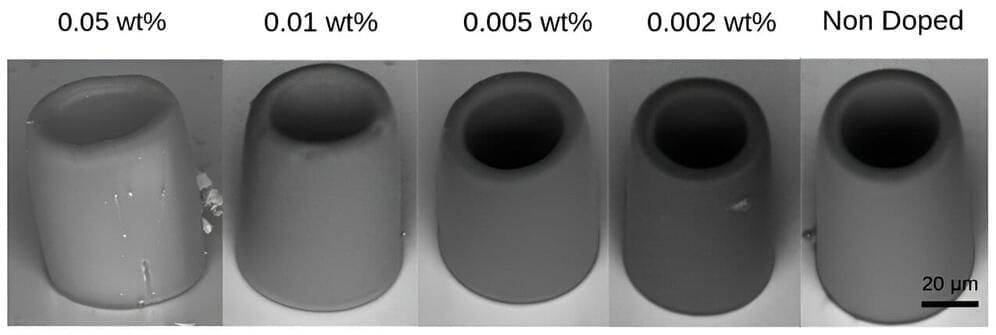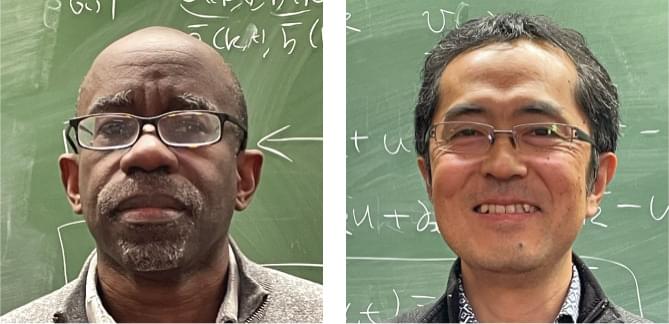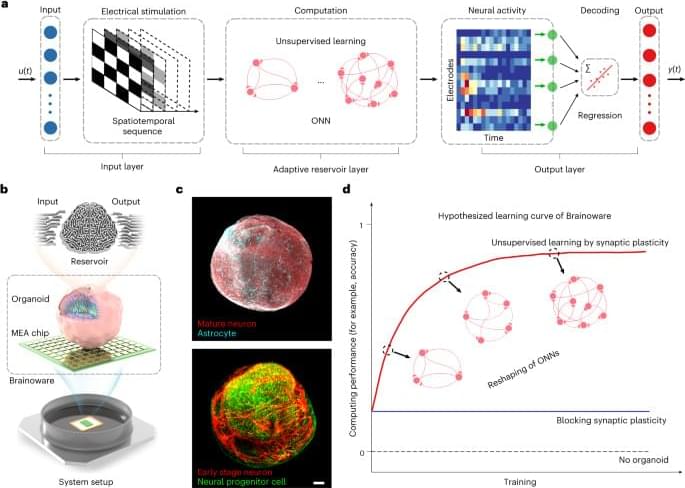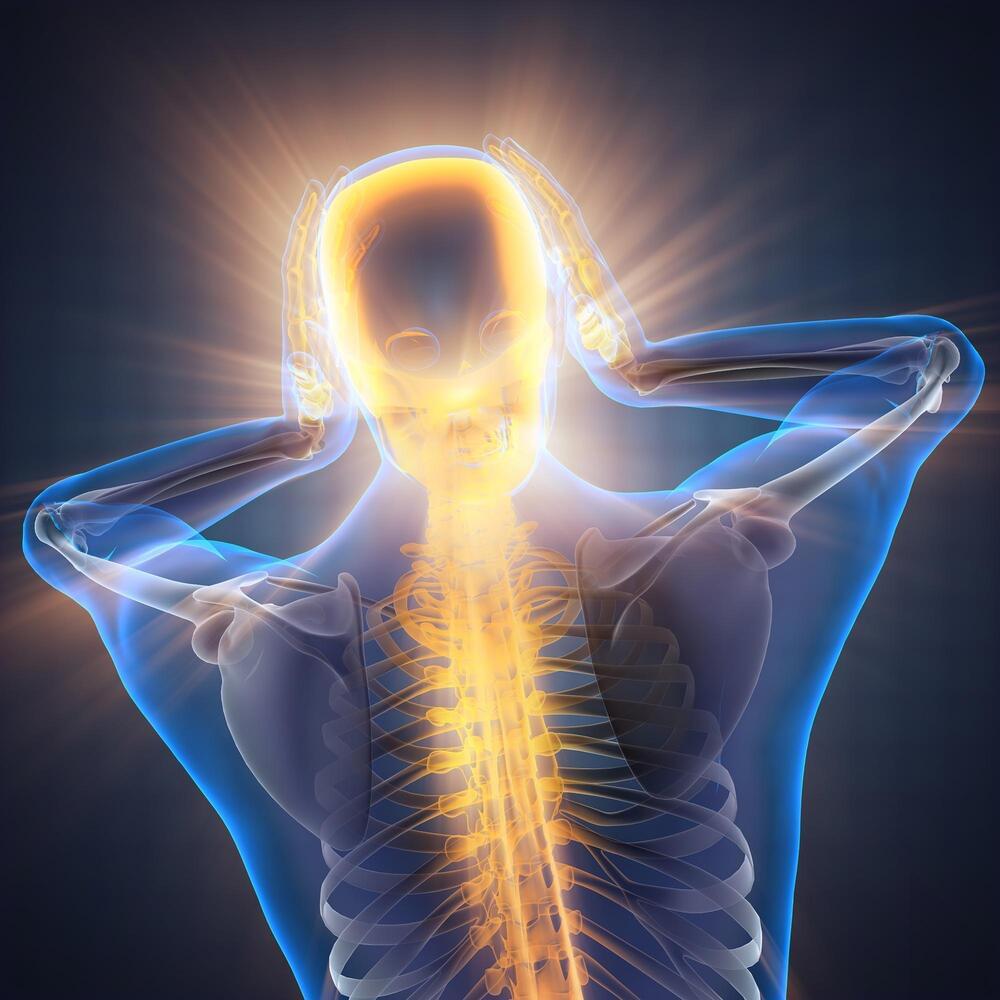In this episode of the Smarter Not Harder Podcast, our guest Alex Rosenberg joins our host Boomer Anderson to give one-cent solutions to life’s $64,000 questions that include:\
\
What are the definitions of scientism and naturalism?\
Is there such a thing as free will, and if so, what implications does it have on the search for purpose in life?\
What is nice nihilism?\
\
Alex Rosenberg is an American philosopher and novelist. He is the R. Taylor Cole Professor of Philosophy at Duke University, and is well known for contributions in the philosophy of biology, as well as the philosophy of economics. He has also written several books, including \.
Category: biological – Page 99

Ancient Insect Mysteries Solved: 312-Million-Year-Old Fossil Sheds Light on Behavior and Evolution
Prehistoric insects, with their delicate and soft bodies, are challenging to preserve as fossils. While wings are more commonly fossilized, the bodies of these insects are often fragmented or incomplete, posing difficulties for scientific study. Paleontologists often rely on trace fossils to learn about these ancient insects, which are almost exclusively found as traces on fossil plants.
“We have a great fossil plant record,” said Richard J. Knecht, a Ph.D. candidate in the Department of Organismic and Evolutionary Biology at Harvard. “Further back in time, it’s the trace fossils that tell us more about the evolution and behavior of insects than the body fossils because plants and the trace fossils on them preserve very well. And the trace, as opposed to a body, won’t move over time and is always found where it was made.”

World’s first human brain-scale neuromorphic supercomputer is coming
ICYMI: DeepSouth uses a #neuromorphiccomputing system which mimics biological processes, using hardware to efficiently emulate large networks of spiking #neurons at 228 trillion #Synaptic operations per second — rivalling the estimated rate of operations in the human brain.
Australian researchers are putting together a supercomputer designed to emulate the world’s most efficient learning machine – a neuromorphic monster capable of the same estimated 228 trillion synaptic operations per second that human brains handle.
As the age of AI dawns upon us, it’s clear that this wild technological leap is one of the most significant in the planet’s history, and will very soon be deeply embedded in every part of our lives. But it all relies on absolutely gargantuan amounts of computing power. Indeed, on current trends, the AI servers NVIDIA sells alone will likely be consuming more energy annually than many small countries. In a world desperately trying to decarbonize, that kind of energy load is a massive drag.
But as often happens, nature has already solved this problem. Our own necktop computers are still the state of the art, capable of learning super quickly from small amounts of messy, noisy data, or processing the equivalent of a billion billion mathematical operations every second – while consuming a paltry 20 watts of energy.

Embedding nanodiamonds in polymer can advance quantum computing and biological studies
A nitrogen-vacancy (NV) center is a defect in the crystal structure of diamond, where a nitrogen atom replaces a carbon atom in the diamond lattice and a neighboring site in the lattice is vacant. This and other fluorescent defects in diamond, known as color centers, have attracted researchers’ attention owing to their quantum properties, such as single-photon emission at room temperature and with long coherence time. Their many applications include quantum information encoding and processing, and cell marking in biological studies.
Microfabrication in diamond is technically difficult, and nanodiamonds with color centers have been embedded in custom-designed structures as a way of integrating these quantum emitters into photonic devices. A study conducted at the University of São Paulo’s São Carlos Institute of Physics (IFSC-USP) in Brazil has established a method for this, as described in an article published in the journal Nanomaterials.
“We demonstrated a method of embedding fluorescent nanodiamonds in microstructures designed for this purpose, using two-photon polymerization [2PP],” Cleber Mendonça, a professor at IFSC-USP and last author of the article, told Agência FAPESP. “We studied the ideal concentration of nanodiamond in the photoresist to achieve structures with at least one fluorescent NV center and good structural and optical quality.” The photoresist is a light-sensitive material used in the fabrication process to transfer nanoscale patterns to the substrate.



Unexpected Discovery About the Body’s Temperature Sensors Could Lead To Better Pain Relievers
The ability to accurately detect heat and pain is critical to human survival. However, the molecular mechanisms behind how our bodies identify these dangers have long been a mystery to scientists.
Now, University at Buffalo researchers have unraveled the complex biological phenomena that drive these critical functions. Their research, recently published in the Proceedings of the National Academy of Sciences, has uncovered a previously unknown and completely unexpected “suicidal” reaction in ion channel receptors that explains the complicated mechanisms that underlie sensitivity to temperature and pain.
The research could be applied to the development of more effective pain relievers.
When do we become Cyborgs? The AI Quantum Biological Monster
An exploration of the merging of biology, AI and quantum computing and the spooky implications of it. My Patreon Page: https://www.patreon.com/johnmichaelgodi…
The Science of Looking Younger, Longer
In Episode 6 of the Lifespan podcast, Dr. David Sinclair and co-host Matthew LaPlante discuss cosmetic aging and how to improve skin, nails, and hair. They talk about why superficial aging occurs and how external signs of aging are often a reflection of biological age. The latest science behind various beautifying therapies is highlighted, including newer interventions like low-level laser therapy and platelet-rich plasma injections. #DavidSinclair #Longevity #SkinCare T.
Biotracking, Age Reversal & Other Advanced Health Technologies
In the final episode of this season, Dr. David Sinclair and Matthew LaPlante focus on current and near-future technologies relevant to health and aging. In addition to discussing the utility of wearable sensors and biological age measurements, they highlight innovative research aimed at reversing biological age. The societal effects of therapies that successfully extend healthspan and/or lifespan are also considered. #DavidSinclair #Longevity #Aging